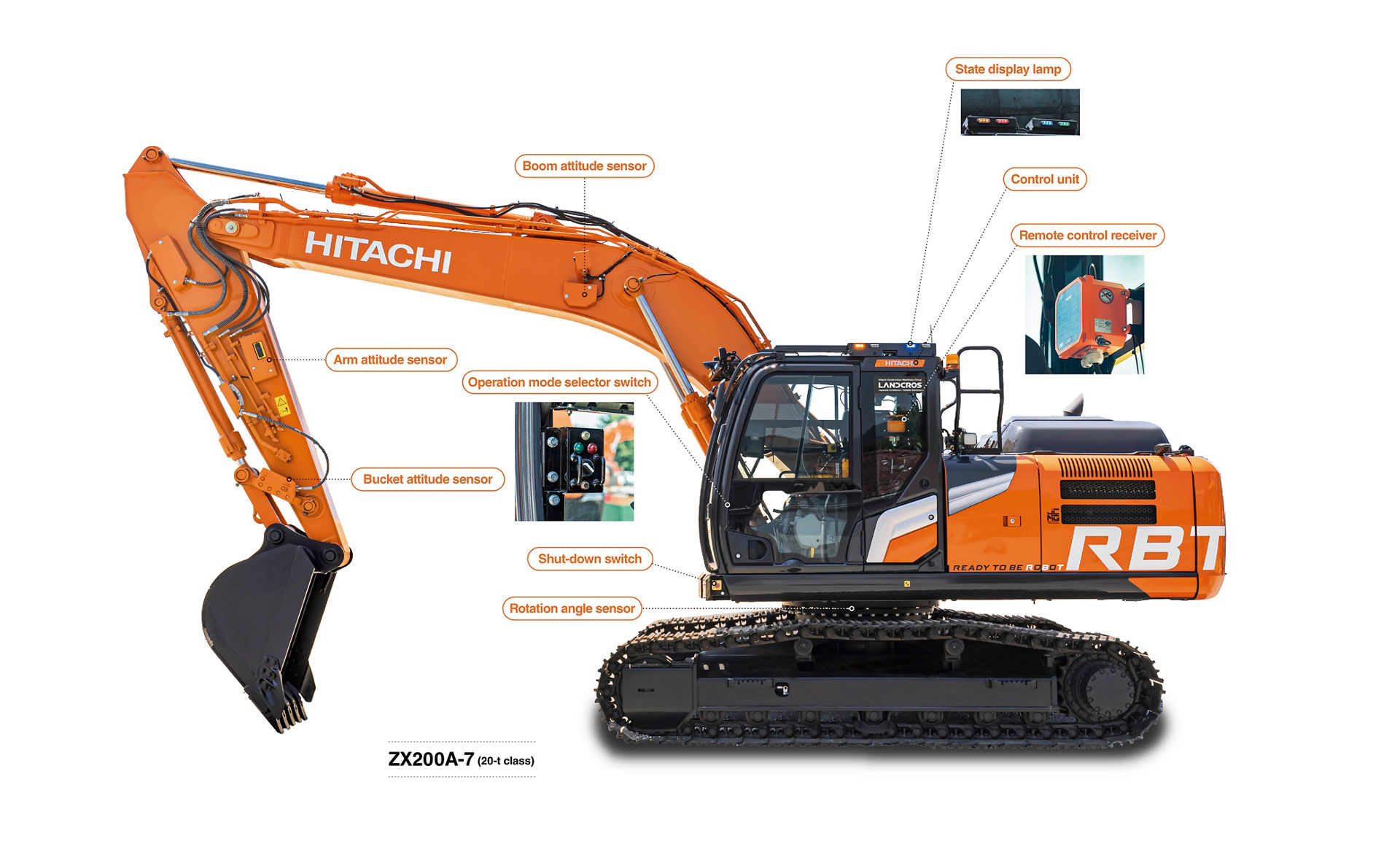TODAY The great analysis of a remotely operated, automated Hydraulic Excavator
Essential to bringing into reality the future of construction sites that Hitachi Construction Machinery is targeting is construction machinery that can handle remote operation and automation.This section introduces the thinking and styles included in development.
In May 2024, the RBT series of Hydraulic Excavators adapted for remote operation and automation and looking toward the expansion of autonomous operation in the future was released for sale. The machines have the sense of “READY TO BE ROBOT,” meaning that they can be converted into robots without needing special modifications, and RBT comes from the word “robot.”
Two models of mid-sized Hydraulic Excavator (20-t class,30-t class) , which are the first part of the series, have been released with a remote control that can be used for remote operation. Below we look at the design philosophy that Hitachi Construction Machinery placed importance on in remote operation and automation and the points that they took great care with, from the perspective of the 20-t class ZX200A-7, which was developed based on the ZX200X-7 in the ZAXIS-7 series.

Hitachi Construction Machinery’s remote control and automation Five styles

Keiichiro Anahara
Construction Business Unit
Development Division Solution Carrier Products Development Dept.

Shihono Yamada
Construction Business Unit
Development Division Solution Carrier Products Development Dept.
STYLE 1:Connect to communication and external systems
Conventional, simple remote-controlled machines had specifications where they performed operations according to one-way orders sent from the remote control device. By contrast, the RBT series can transmit operation data from the machine side and can also handle control with external signals from sources other than the remote control device. It is also possible to move it by connecting the system that the client uses. “In terms of function, it has a difference of about two generations from the conventional machines.” (Anahara)
STYLE 2:First step towards autonomous operation
Being “READY” for autonomous operation is a major characteristic of the RBT series. The ZX200A-7 has been positioned as the base machine for remote operation and automation but is not limited to its current functions: it can be expanded by combining new systems. It has been developed with the goal of being capable of handling diverse customer needs, including advanced automatic operation and remote control from a physically separated location.
STYLE 3:Innovation in the body
Compared to the conventional machines, we have made innovations in the body structure, such as placing the on-board operation selector switch in a position that is easier for the operator to use and installing sensors in positions that are less easily affected by vibration. “We want to consider many more innovations in terms of function and safety and implement them, while also taking cost into consideration.” (Yamada)
STYLE 4:Pursue operability
Hitachi Construction Machinery has constantly pursued “machines that are easy to move” and “machines that move as expected.” This philosophy has naturally been injected into the RBT series as well. “We were conscious of ‘flavoring’ it so that even when using remote control, operators could use the machinery with the same sensation as when they are operating it from on board, such as by settings the parameters to give a sense of operation that was as close as possible to that when actually operating the machinery from the operator’s seat.” (Anahara)
STYLE 5:Thoroughly considering safety
At present, the machinery is expected to be used in unmanned areas, but there may be scenes in the future where it is used with manned machinery, other companies’ equipment, and sites where there are people. The particular focus in this case is being thorough about safety. The company implements a complete regime that covers avoiding contact with people and equipment moving around the machine, of course, but also designing to prevent unauthorized operation of the machine through cyberattacks and preparing mechanisms that allow the machine to be certainly shut down should it be necessary.

